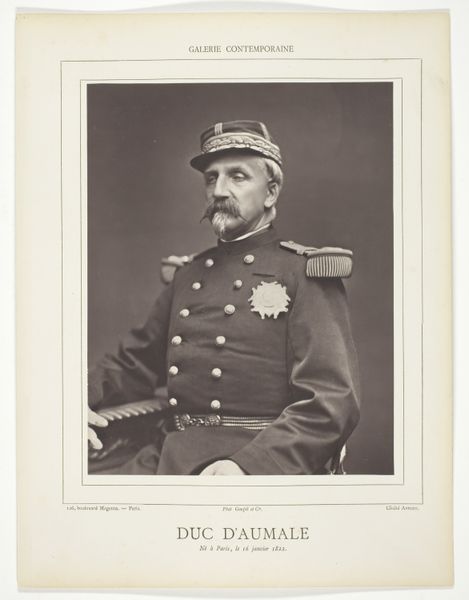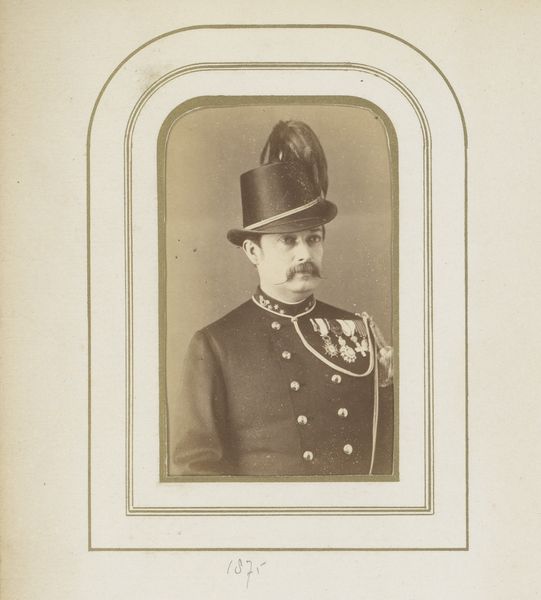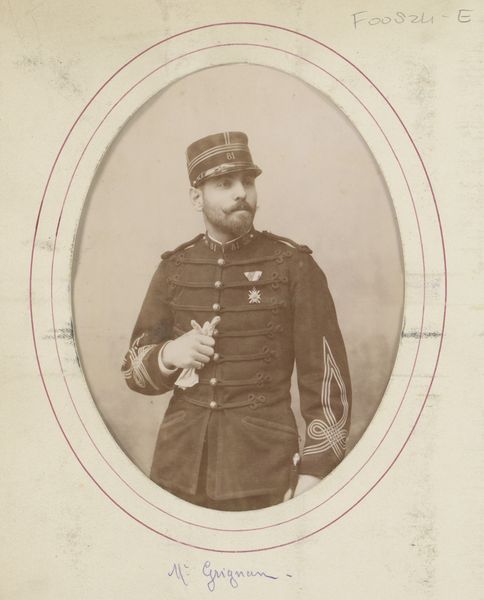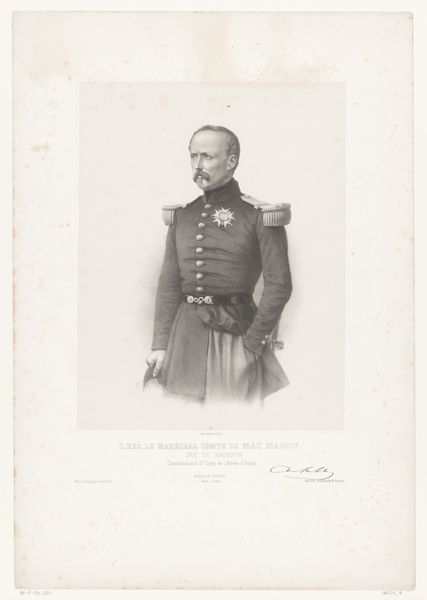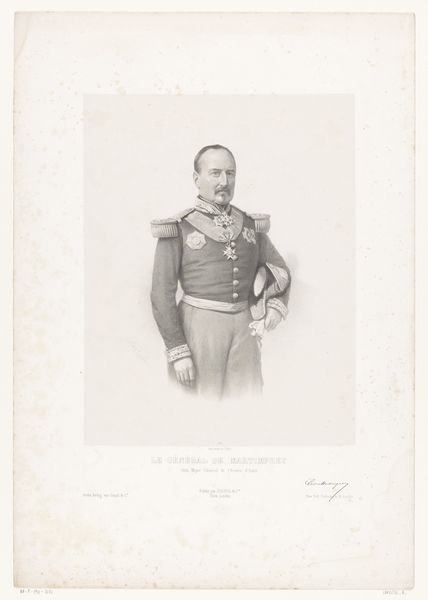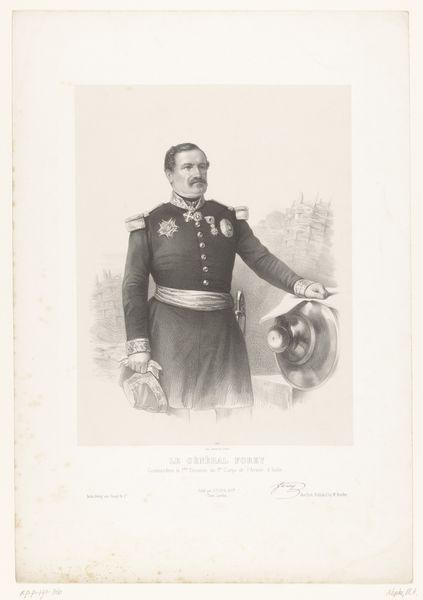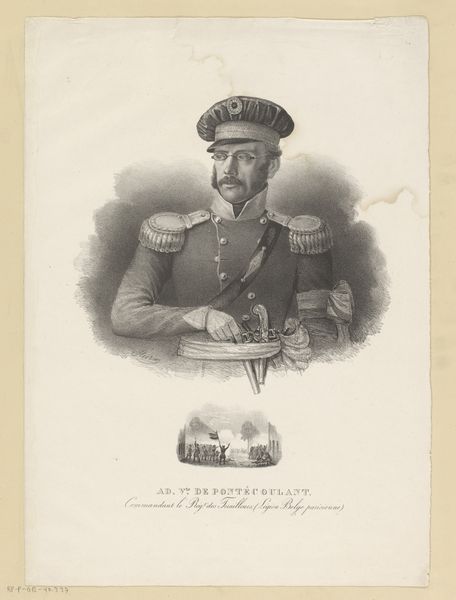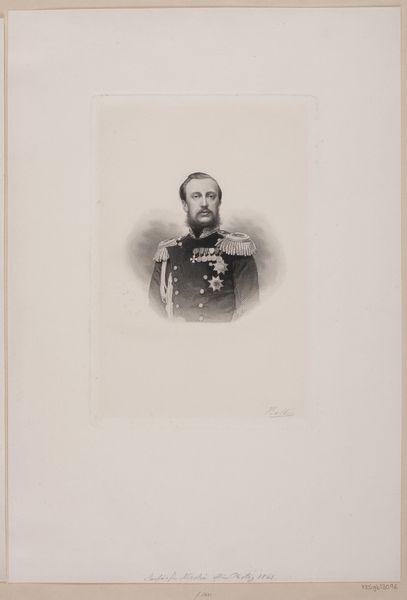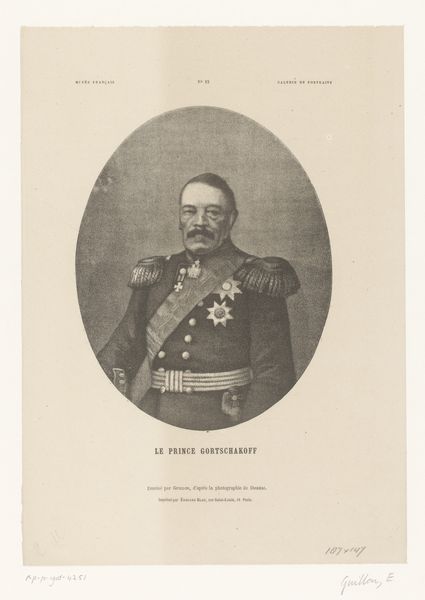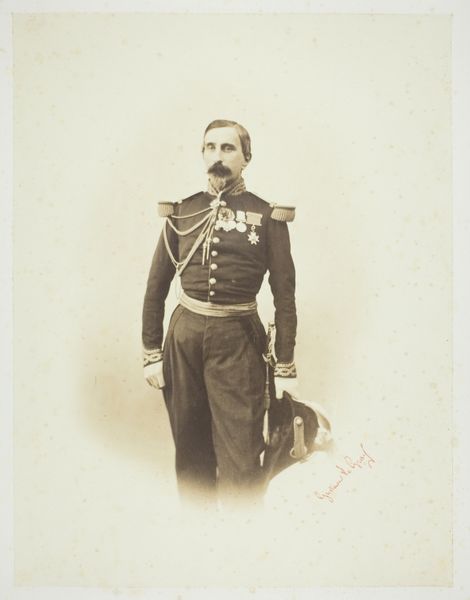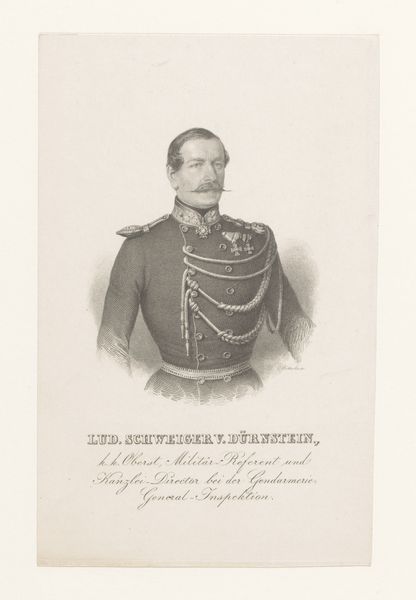
daguerreotype, paper, photography
#
portrait
#
16_19th-century
#
daguerreotype
#
paper
#
photography
#
france
#
history-painting
Dimensions: 19.7 × 14.9 cm (image, oval); 34 × 26 cm (mount)
Copyright: Public Domain
Curator: Here we have a portrait of Louis-Léon-César Faidherbe, dating to around 1876, by Étienne Carjat. Editor: It possesses a very somber mood, doesn't it? The high contrast and starkness lend the figure an air of undeniable authority, but also something of… rigidity. Curator: Indeed. Let's examine that contrast more closely. Notice the sharp delineation between the dark oval backdrop and the figure. The formal symmetry, with the carefully balanced details of his uniform and medals, it’s a clear statement of power. The image itself is a daguerreotype, transferred to paper. Editor: Ah, but the process! Think of the alchemical transformation involved in creating a daguerreotype. Silver-plated copper, light, mercury vapor… And the paper, of course—its production, its sourcing, the labor embedded within its very fibers. Every step laden with specific materials and economic choices. Curator: Absolutely, the medium conveys intention. Consider how Carjat has composed the photograph within an oval frame, placing the image within another rectangular border. Editor: True, the layering effects a clear distinction. It almost feels like Faidherbe is presented for observation or perhaps commodification. But consider Faidherbe's role. As a military administrator in Senegal, his impact shaped landscapes, trade, and undoubtedly the lives of the local people. What was the cost to manufacture all those insignias adorning the general’s chest, I wonder? Curator: The medals do disrupt the composition somewhat, don't they? Drawing the eye away from his face and towards the glittering symbols of authority and the material wealth those symbols represent. Editor: They speak to the economics of power and the social structure Faidherbe himself enforced through military means. His pose conveys strength and determination. Carjat successfully delivers Faidherbe as a figure of leadership. Curator: And on this print, we understand photography as more than merely capturing an likeness but functioning as a means of conveying ideology. Editor: Ultimately, seeing how artistry blends materials and societal implications offers potent insights into how visual culture impacts viewers.
Comments
No comments
Be the first to comment and join the conversation on the ultimate creative platform.

